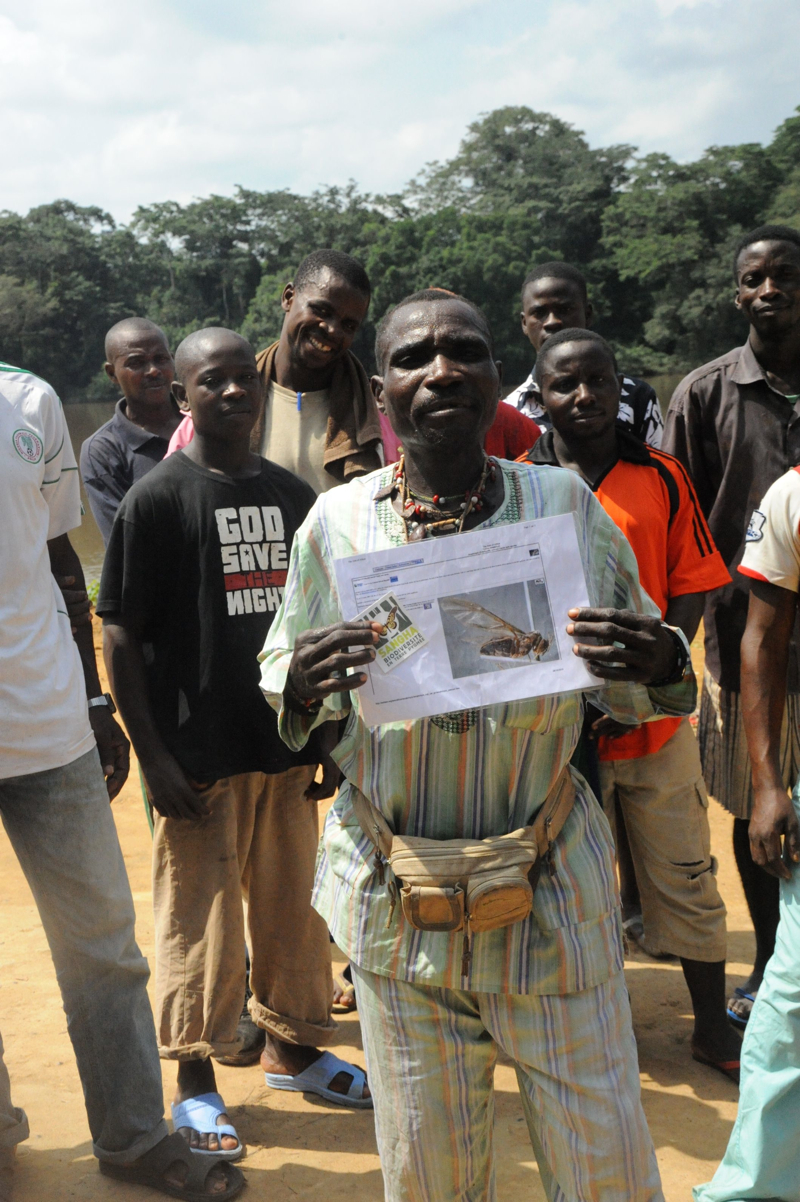Anoplolepis (Zelalleyella) samori Taylor new
species
  Type locality Central
African Republic Type locality Central
African Republic  . .
QUEEN (Gyne) DESCRIPTION: unlike the related Zealleyella
species from South Africa, this has no pubescence; the form of the hind
wing is also quite different, with m + cua longer than cell 1a; whereas
in the three Southern Africa species it is shorter, generally only
about as half as long. see Anoplolepis
custodiens for comparison. Although it has obvious affinities
with Anoplolepis opaciventris, of
which also only the queen is known, this has a very distinct median
carina on the clypeus whilts opaciventris
does not.
TL ca 11.0 mm, HW 1.85, HL 1.7, SL 2.0, CI 106, SI 106
Named in recognition of Mawende Samori, the faith healer accompanying
the 2005 & 2008 expeditions.
Specimens deposited in the Oxford University Museum of Natural History.
|
 The
photomontage is of the holotype queen from the Central African
Republic,
Dzanga-Sangha Nature Reserve, 26.ii.2005 19h-6h Camp 6 02°55'05.6" N
16°10'11.4" E; CAR GS; Sur plate-forme à 38 m du sol dans un Ayous (Triplochiton
scleroxylon, Sterculiaceae); collector Philippe Annoyer. Other
images can be seen in the folder at - The
photomontage is of the holotype queen from the Central African
Republic,
Dzanga-Sangha Nature Reserve, 26.ii.2005 19h-6h Camp 6 02°55'05.6" N
16°10'11.4" E; CAR GS; Sur plate-forme à 38 m du sol dans un Ayous (Triplochiton
scleroxylon, Sterculiaceae); collector Philippe Annoyer. Other
images can be seen in the folder at -  . .
|
Possibly the species recorded by Forel (1909b), as Plagiolepis
custodiens, from Zaïre, at Banana by Busschodts. Banana,
however, is coastal and over 1000 km away from Dzangha-Sangha.
Wheeler (1922) wrote of Zaïre findings at Banana, San Antonio
(Lang and Chapin). At Banana this species was found nesting in flat
craters in the pure sand of the sea-beach (PL. XIX, figs. 1 and 2).
According to a note by Mr. Lang, "the ants were found very near the
water, where the sand was moved by the wind or even inundated by the
breakers. Only a slight excavation, marking the entrance of the nest,
was visible, and it was difficult to trace out the galleries. These
ants carry particles of sand considerable distances, sometimes two or
three feet from the nest entrances. They work during the day-time and
retreat into their nests when disturbed."
A. custodiens has been previously taken in Banana by
Busschodts and in Angola by Silvestri, and is well known from other
parts of the Ethiopian Region as far north as Abyssinia and as far
south as the Cape. It is the host of (the parasitic species) A.
nuptialis Santschi, which was discovered by Dr. Brauns at
Willowmore, Cape Province.
|
 Faith
healer Mawende Samori, great helper to the expeditions. Faith
healer Mawende Samori, great helper to the expeditions.
|
|